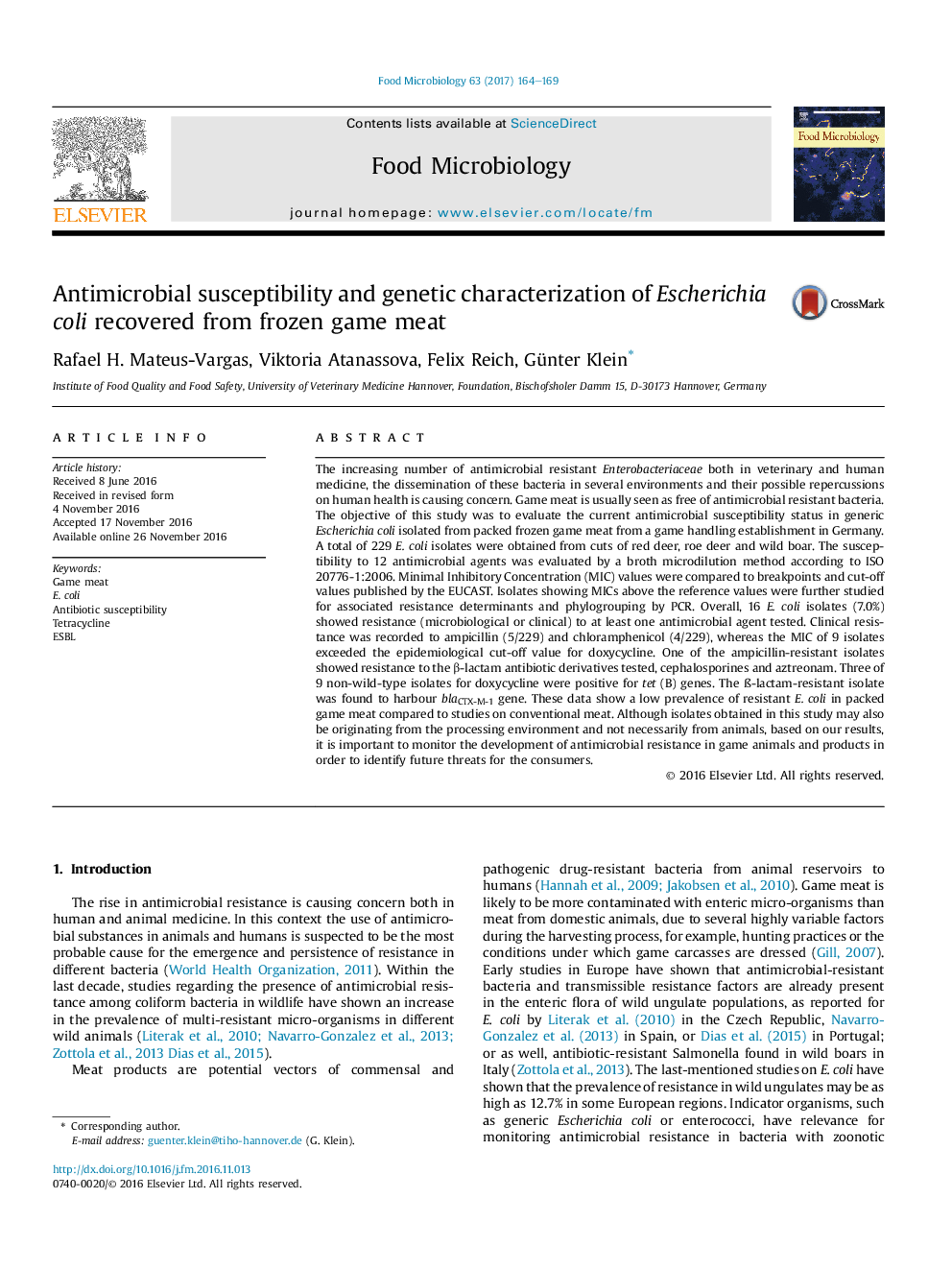| Article ID | Journal | Published Year | Pages | File Type |
|---|---|---|---|---|
| 5740184 | Food Microbiology | 2017 | 6 Pages |
â¢This study evaluates the antimicrobial susceptibility status in Escherichia coli isolated from packed frozen game meat.â¢E. coli strains showed resistance to β-lactam antibiotics, chloramphenicol and doxycycline.â¢The presence of transferable resistance genes, such as blaCTX-M-1 and tet(B), could be confirmed in resistant E. coli.
The increasing number of antimicrobial resistant Enterobacteriaceae both in veterinary and human medicine, the dissemination of these bacteria in several environments and their possible repercussions on human health is causing concern. Game meat is usually seen as free of antimicrobial resistant bacteria. The objective of this study was to evaluate the current antimicrobial susceptibility status in generic Escherichia coli isolated from packed frozen game meat from a game handling establishment in Germany. A total of 229 E. coli isolates were obtained from cuts of red deer, roe deer and wild boar. The susceptibility to 12 antimicrobial agents was evaluated by a broth microdilution method according to ISO 20776-1:2006. Minimal Inhibitory Concentration (MIC) values were compared to breakpoints and cut-off values published by the EUCAST. Isolates showing MICs above the reference values were further studied for associated resistance determinants and phylogrouping by PCR. Overall, 16 E. coli isolates (7.0%) showed resistance (microbiological or clinical) to at least one antimicrobial agent tested. Clinical resistance was recorded to ampicillin (5/229) and chloramphenicol (4/229), whereas the MIC of 9 isolates exceeded the epidemiological cut-off value for doxycycline. One of the ampicillin-resistant isolates showed resistance to the β-lactam antibiotic derivatives tested, cephalosporines and aztreonam. Three of 9 non-wild-type isolates for doxycycline were positive for tet (B) genes. The Ã-lactam-resistant isolate was found to harbour blaCTX-M-1 gene. These data show a low prevalence of resistant E. coli in packed game meat compared to studies on conventional meat. Although isolates obtained in this study may also be originating from the processing environment and not necessarily from animals, based on our results, it is important to monitor the development of antimicrobial resistance in game animals and products in order to identify future threats for the consumers.
